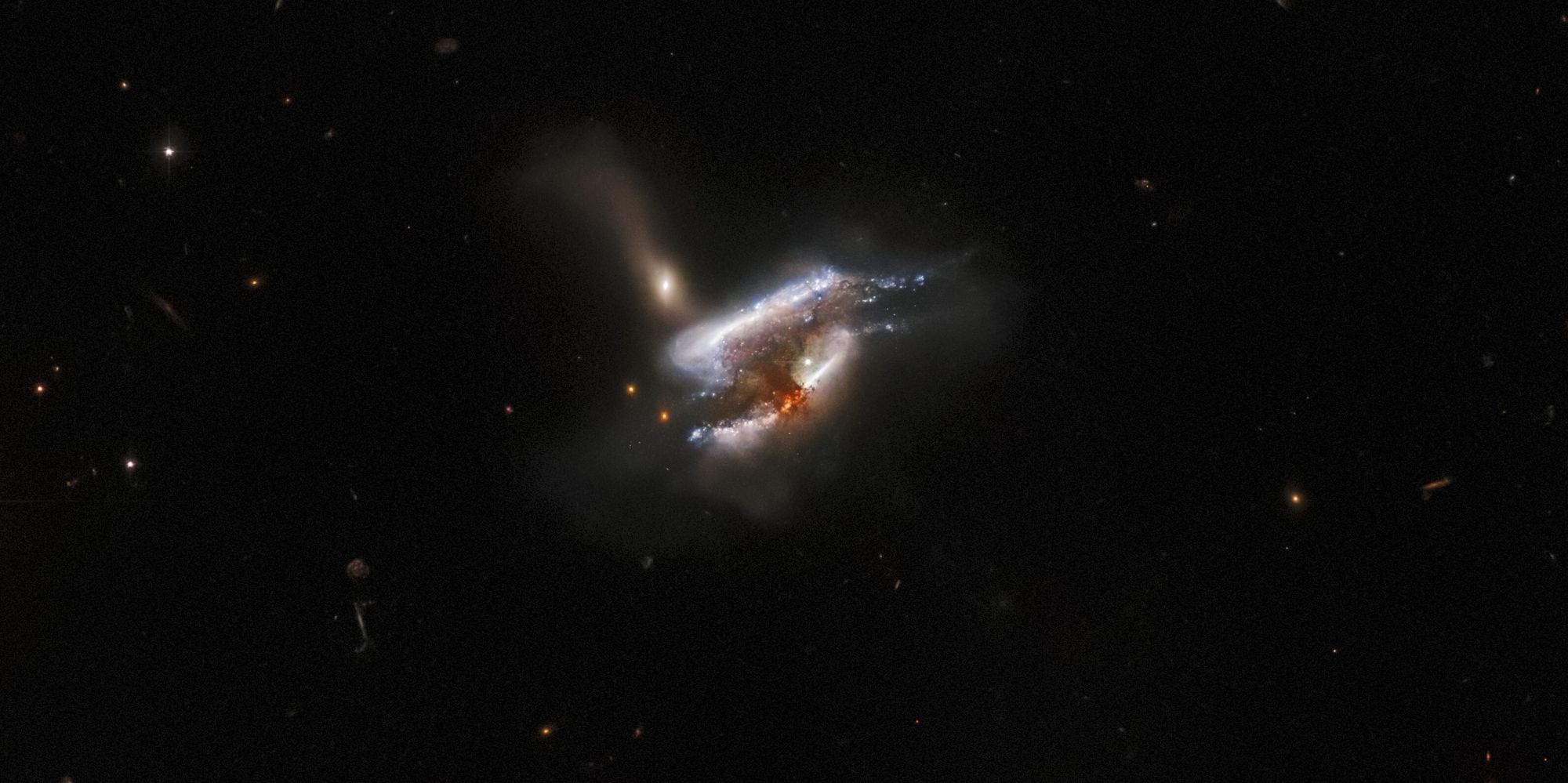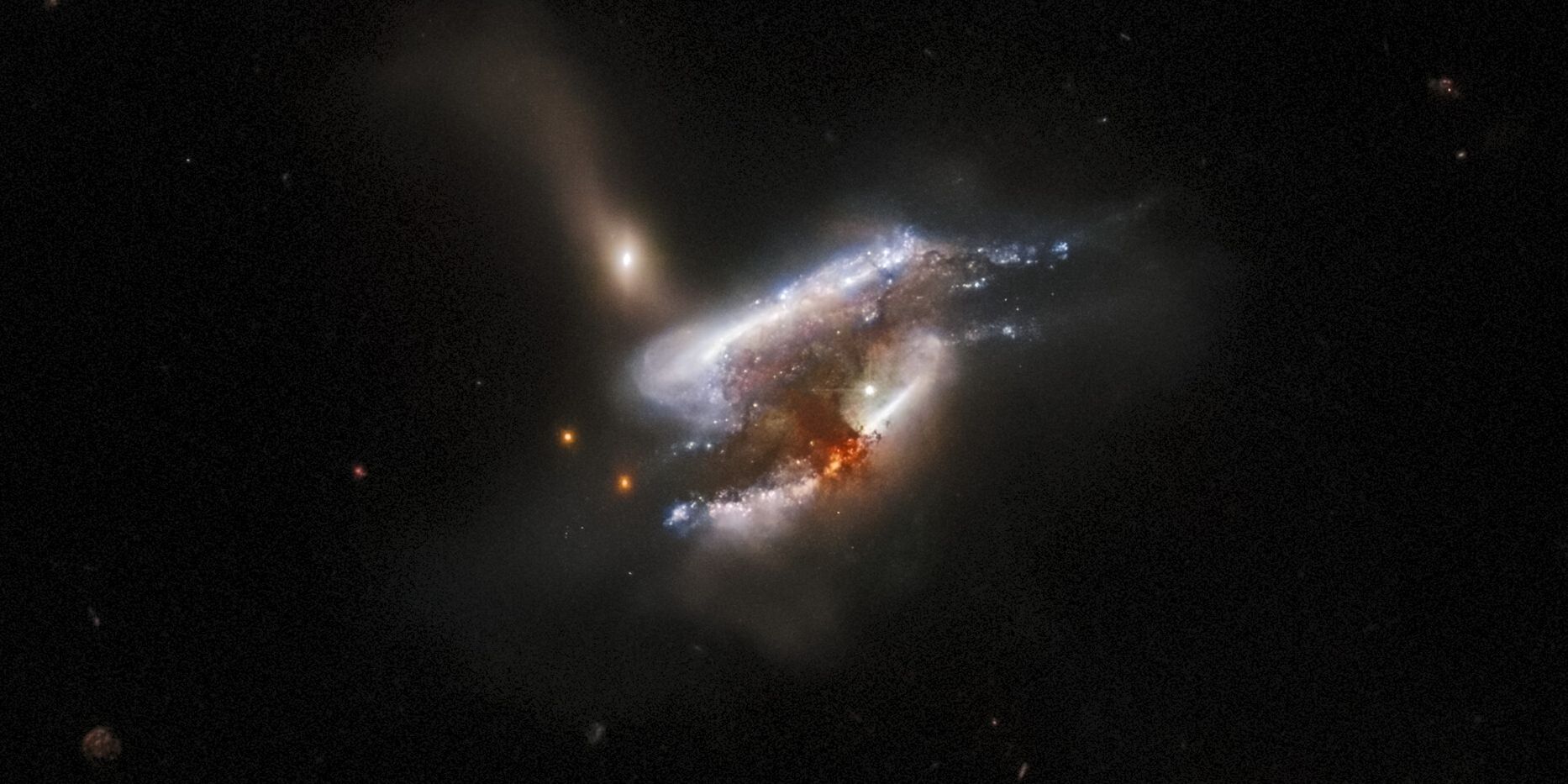NASA's Hubble telescope has seen quite a lot in its 30+ years of operation — but what about three galaxies merging into one? To say that outer space is a strange and wondrous place would be the understatement of the century. From alien planets, blazing bright stars, and billions of other galaxies scattered throughout the universe, it's a neverending stream of fascination.
One instrument that's been essential in uncovering many of these mysteries is Hubble. Launched in April 1990, Hubble's established quite the portfolio over the years. It's helped astronomers determine the age of the universe, establish a better understanding of dark matter, and provided valuable information on Pluto. On top of all that, Hubble's also known for taking jaw-dropping photos. And NASA shares new ones all the time! It's recently published Hubble photos of two galaxies 'dancing' with each other, a strange space 'chamaeleon,' and a galaxy that looks just like that USS Enterprise.
For its latest Hubble picture, NASA just shared an image of something peculiar. Even without any background about what's happening in the photo, it's still quite stunning. Most of the photo shows the deep blackness of space, but in the center is a strange mishmash of light. There's a yellow line on the bottom, a white/blue line on top, and a mix of dust in the middle of the two. There's also a haze of gas/dust surrounding the whole thing — giving it an eerie and alien appearance.
A Closer Look At This Triple Galaxy Merger
In reality, what you're looking at above is known as galaxy merger IC 2431. It's located around 681 million light-years away from Earth and resides in the Cancer constellation. As the 'galaxy merger' name suggests, this isn't just a single galaxy. It's not even a combination of two galaxies! Instead, NASA believes IC 2431 is "a triple galaxy merger." In other words, these are three different galaxies that have come together and are now morphing into a single object.
But a galaxy merger isn't the only thing happening here. NASA also explains that there's a "tumultuous mixture of star formation and tidal distortions caused by the gravitational interactions of this galactic trio." NASA also points out the thick dust cloud in the center of the photo but explains that light from a 'background galaxy' is "piercing its outer extremities."
Pictures like this are where Hubble shines brightest. IC 2431 is unimaginably far from Earth and looks unlike anything in our Solar System. Thanks to a telescope like Hubble, though, astronomers can look at it in amazing detail. With Hubble expected to remain operational for the foreseeable future — and the James Webb telescope beginning its exploration work this summer — discoveries like this are only going to get better. Whether you're an avid space fan or a casual observer, that's an exciting future to look forward to.
Source: NASA


